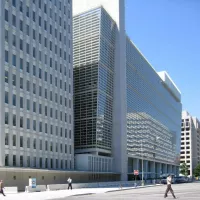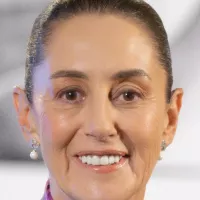Mexico, officially the United Mexican States, is a North American country bordering the United States to the north, and Guatemala and Belize to the southeast. It has extensive coastlines on the Pacific Ocean, Caribbean Sea, and Gulf of Mexico. Covering 1,972,550 km2, it's the thirteenth-largest country by land area. With over 130 million residents, Mexico ranks as the tenth most populous globally and has the largest number of native Spanish speakers. Mexico City is its capital and largest city and one of the world's most populous metropolitan areas.
1900: Mexican Population
In 1900, the Mexican population was a little more than 13 million.
1910: Mexican Revolution
Corridos were particularly popular during the Mexican Revolution (1910–20).
1910: Start of the Mexican Revolution
In 1910, the Mexican Revolution began with scattered uprisings against President Díaz after the fraudulent election.
1910: Mexican War of Independence
In 1910, the Mexican War of Independence occurred, marking a pivotal moment in the nation's history.
1910: Establishment of the National Autonomous University of Mexico
The National Autonomous University of Mexico was officially established in 1910, becoming one of the most important institutes of higher learning in Mexico.
May 1911: Resignation of President Díaz
In May 1911, President Díaz resigned following the fraudulent 1910 election and subsequent uprisings.
1911: End of Porfirio Díaz's rule
In 1911, the 35-year rule of General Porfirio Díaz came to an end, marking a significant shift in Mexican politics.
1911: End of the Porfiriato
The Porfirian era ended in 1911 after relative peace after four decades of civil unrest and war.
February 1913: Military coup d'état overthrew Madero's government
In February 1913, a military coup d'état, supported by the U.S., overthrew Madero's government, resulting in his murder by agents of Federal Army General Victoriano Huerta.
March 1913: Woodrow Wilson inaugurated as president
In March 1913, Woodrow Wilson was inaugurated as president and refused to recognize Huerta's regime, allowing arms sales to the Constitutionalists.
1914: Defeat of the Federal Army
In 1914, a coalition of anti-Huerta forces defeated the Federal Army, leaving only revolutionary forces.
1915: Battle of Celaya
In 1915, Carranza's best general, Alvaro Obregón, defeated Villa in the Battle of Celaya, leading to the decline of Villa's northern forces.
1916: Constitutional convention to draft the Constitution of 1917
In 1916, the winners of the Mexican revolution met at a constitutional convention to draft the Constitution of 1917.
February 1917: Ratification of the Constitution of 1917
In February 1917, the Constitution of 1917 was ratified, empowering the government and strengthening anticlerical provisions.
1917: Calles strictly enforced anticlerical articles of the 1917 Constitution
As president, Calles strictly enforced anticlerical articles of the 1917 Constitution which ended with an agreement.
1917: Germany attempted to get Mexico to side with it
In 1917, Germany attempted to get Mexico to side with it, sending a coded telegram to incite war between the U.S. and Mexico, but Mexico remained neutral.
1917: Adoption of the 1917 Constitution
In 1917, Mexico adopted the Constitution of 1917, which aimed to address social unrest following the Mexican Revolution.
1917: Constitution Establishes Government Structure
In 1917, the Constitution of Mexico established the framework for a representative, democratic, and republican government based on a presidential system.
1917: Constitution of 1917
In 1917, the Constitution used the name Estados Unidos Mexicanos—or the variant Estados-Unidos Mexicanos, all of which have been translated as "United Mexican States".
1917: Limits on the Catholic Church
The Constitution of 1917 put limits on the role of the Catholic Church in Mexico.
1919: Assassination of Emiliano Zapata
In 1919, President Carranza had peasant leader Emiliano Zapata assassinated.
1920: Overthrow of Carranza
In 1920, Obregón and two other Sonoran revolutionary generals drew up the Plan of Agua Prieta, overthrowing Carranza, who died fleeing Mexico City.
1920: Start of the post-revolutionary period
In 1920, the post-revolutionary period began with revolutionary generals serving as Presidents of Mexico.
1920: Mexican Revolution
The Mexican Revolution ended around 1920.
1921: Census Reporting Population Loss
The 1921 census reported a loss of about 1 million inhabitants due to the Mexican Revolution.
1924: Presidency of Plutarco Elías Calles
Plutarco Elías Calles served as President of Mexico from 1924 to 1928.
1928: Assassination of Obregón
In 1928, Obregón won the elections but was assassinated by a Catholic activist, causing a political crisis of succession.
1929: Integration of institutes into UNAM
From 1929 to 1973, twelve institutes were integrated into UNAM.
1929: Founding of the Institutional Revolutionary Party
In 1929, Calles founded the Institutional Revolutionary Party, which dominated Mexico for the rest of the 20th century.
1929: Founding of the PRI
In 1929, the Institutional Revolutionary Party (PRI) was founded to unite all factions of the Mexican Revolution.
1929: Start of the Maximato
The Maximato period began in 1929 and lasted until 1934.
1934: Presidency of Lázaro Cárdenas
Lázaro Cárdenas served as President of Mexico from 1934 to 1940.
1934: End of the Maximato
The Maximato period ended in 1934 during the presidency of Lázaro Cárdenas.
1936: Foundation of the National Polytechnic Institute
The National Polytechnic Institute was founded in 1936.
March 1938: Mexican oil expropriation
In March 1938, the Mexican oil expropriation nationalized the U.S. and Anglo-Dutch oil company, resulting in the creation of Pemex.
1939: Founding of PAN
In 1939, the National Action Party (PAN), a conservative party, was founded.
1940: Start of Manuel Ávila Camacho's presidency
In 1940, Manuel Ávila Camacho became president, leading to improved relations between the U.S. and Mexico.
1940: Presidency of Manuel Avila Camacho
Manuel Avila Camacho served as President of Mexico from 1940 to 1946.
1943: María Candelaria
In 1943, María Candelaria by Emilio Fernández, was one of the first films awarded a Palme d'Or at the Cannes Film Festival.
1946: Election of Miguel Alemán
From 1946 with the election of Miguel Alemán, Mexico embarked on an aggressive program of economic development, known as the Mexican miracle.
1946: Palme d'Or
In 1946, María Candelaria was awarded a Palme d'Or at the Cannes Film Festival, the first time the event was held after World War II.
1946: End of the first quarter-century of the post-revolutionary period
In 1946, the first quarter-century of the post-revolutionary period came to an end.
1947: Luis Buñuel in Mexico
Between 1947 and 1965, Luis Buñuel realized in Mexico some of his masterpieces.
1949: Los Olvidados
In 1949, Luis Buñuel realized Los Olvidados in Mexico.
1950: Mexican Growth Rate
Between 1950 and 1980, Mexico had growth rates of over 3%.
1952: Ballet Folklórico de México Founded
In 1952, the Ballet Folklórico de México was founded. It performs music and dance from the prehispanic period through the Mexican Revolution in regional attire at the Palacio de Bellas Artes.
1958: Bilingual Government Radio Stations
From 1958 to 1965, bilingual government radio stations broadcasting in Spanish and indigenous languages were used as a tool for indigenous education.
1959: Creation of the Mexican Academy of Sciences
In 1959, the Mexican Academy of Sciences was created to coordinate scientific efforts between academics.
1961: Viridiana
In 1961, Luis Buñuel realized Viridiana in Mexico.
1962: Establishment of DINA S.A.
In 1962, DINA S.A. was established, building buses and trucks.
1965: Luis Buñuel in Mexico
Between 1947 and 1965, Luis Buñuel realized in Mexico some of his masterpieces.
1965: Migration to the United States
Between 1965 and 2015, over 16 million Mexicans migrated to the United States.
1968: Mexico City Hosted the XIX Olympic Games
In 1968, Mexico City hosted the XIX Olympic Games, becoming the first Latin American city to do so.
1968: 1968 Summer Olympics and Tlatelolco Massacre
In 1968, Mexico hosted the Summer Olympics, which led to the Tlatelolco Massacre, where around 300-800 protesters were killed.
1968: Treaty of Tlatelolco
In 1968, Mexico signed the Treaty of Tlatelolco, abandoning the possibility of manufacturing nuclear weapons and pledging to use its nuclear technology only for peaceful purposes.
1968: 1968 Protests
The embrace of rock and roll by young Mexicans in the 1960s and 1970s culminated in the 1968 protests.
1973: Integration of institutes into UNAM
From 1929 to 1973, twelve institutes were integrated into UNAM.
1978: Death of Carlos Chávez
Carlos Chávez, the most well-known Mexican composer of the twentieth century, died in 1978.
1979: Instituto Nacional Indigenista Establishes Radio Network
Since 1979, the Instituto Nacional Indigenista has established a national network of bilingual radio stations.
1980: End of High Growth Era
Between 1950 and 1980, Mexico's growth rates were over 3%. By 1980, the Mexican population had doubled in twenty years.
1980: Oil exports
In 1980, oil exports accounted for 61.6% of total exports in Mexico.
1980: Literacy Rate in Mexico
In 1980, the literacy rate in Mexico was 82.99%.
1982: Mexican Population
In 1982, Mexico's population was recorded at 70 million.
1987: UNESCO World Heritage Site
In 1987, Teotihuacan was designated a UNESCO World Heritage Site.
December 1988: Salinas took oath of office
On December 1, 1988, Carlos Salinas took the oath of office amidst massive protests in Mexico City over alleged electoral fraud in the presidential election.
1989: Founding of PRD
In 1989, the Party of the Democratic Revolution (PRD), a left-wing party, was founded.
1990: PRI described as "perfect dictatorship"
In 1990, Mario Vargas Llosa famously described the PRI as the "perfect dictatorship", although by that time, the PRI's dominance was already facing significant challenges.
1990: Privatization of Telmex
Telmex (Teléfonos de México), previously a government monopoly, was privatized in 1990.
1992: Amendment to the Constitution of Mexico
In 1992, Article 2 of the Constitution of Mexico was amended to define Mexico as a pluricultural country and to emphasize the role of indigenous Mexicans.
1992: Como agua para chocolate
In 1992, the film Como agua para chocolate was successful in creating universal stories about contemporary subjects.
January 1994: NAFTA and Zapatista Rebellion
On January 1, 1994, the North American Free Trade Agreement (NAFTA) was established and the Zapatista Army of National Liberation (EZLN) began an armed peasant rebellion in Chiapas.
1994: Mexico joined OECD
In 1994, Mexico joined the Organisation for Economic Co-operation and Development (OECD).
1994: Signing of the North American Free Trade Agreement (NAFTA)
In 1994, Mexico signed the North American Free Trade Agreement (NAFTA), marking a shift towards neoliberalism and impacting the nation's economy.
1995: Mario J. Molina Nobel Prize
In 1995, the Mexican chemist Mario J. Molina shared the Nobel Prize in Chemistry with Paul J. Crutzen and F. Sherwood Rowland for their work in atmospheric chemistry.
1996: San Andrés Accords
In 1996, the San Andrés Accords granted autonomy, recognition, and rights to the indigenous population of Mexico, following the Zapatista Army of National Liberation's push against the mestizaje ideology.
1997: Attendance to Church Services
In 1997, 47% of the Catholics in Mexico attended church services weekly.
1999: Economic Growth Peak
By the end of 1999, Mexico's economy experienced a rapid recovery with growth peaking at almost 7% due to major macroeconomic reforms started by Ernesto Zedillo.
1999: Sex, Shame, and Tears
In 1999, the film Sex, Shame, and Tears was successful in creating universal stories about contemporary subjects.
2000: Oil exports
By 2000, oil exports accounted for only 7.3% of total exports in Mexico.
2000: Projected Population
By the year 2000, it was expected that there would be 120 million people living in Mexico, based on the population growth rate between 1950 and 1980.
2000: PRI Lost Presidential Election
In 2000, after 71 years of rule, the PRI lost the presidential election to Vicente Fox of the National Action Party (PAN).
2000: Killings of journalists and media workers
Since 2000, more than 100 journalists and media workers have been killed or disappeared, with most of these crimes remaining unsolved.
2001: Slowdown of the economy
After the slowdown of 2001 the country recovered and grew in the following years.
2001: Y tu mamá también
In 2001, the film Y tu mamá también was successful in creating universal stories about contemporary subjects.
2002: Growth of Mexican electronics exports
Between 2002 and 2012, Mexican electronics exports grew by 73%.
2002: Second Fastest Deforestation Rate
In 2002, Mexico had the second fastest rate of deforestation in the world, only behind Brazil.
2002: The Crime of Father Amaro
In 2002, the film The Crime of Father Amaro was successful in creating universal stories about contemporary subjects.
March 2003: Creation of the National Indigenous Languages Institute
In March 2003, the National Indigenous Languages Institute was created to promote and protect the use of Mexico's indigenous languages.
2003: Anti-discrimination laws existed
Since 2003, anti-discrimination laws regarding sexual orientation have existed in Mexico.
2004: Economic Growth
In 2004, Mexico experienced a 4.2% economic growth.
2005: Economic Growth
In 2005, Mexico experienced a 3.0% economic growth.
2005: Gastronomy Candidature for World Heritage Site of UNESCO
In 2005, Mexico presented the candidature of its gastronomy for World Heritage Site of UNESCO for the first time; however, the result was negative.
2005: Solar PV panels installed in Mexico
In 2005, there were only 115,000 square meters of solar PV (photo-voltaic) panels installed in Mexico.
2006: Increase in Poverty
From 2006 to 2010, the portion of Mexicans who live in poverty rose from 18%–19% to 46% (52 million people).
2006: Calderón declared winner
In 2006, Felipe Calderón of the PAN was declared the winner of the presidential election by a very narrow margin, which was contested by Andrés Manuel López Obrador.
2006: Economic Growth
In 2006, Mexico experienced a 4.8% economic growth.
2006: Trade with the United States and Canada
In 2006, trade with the United States and Canada accounted for almost 50% of Mexico's exports and 45% of its imports.
2006: Start of Mexico's Drug War
Since 2006, Mexico's drug war has resulted in over 120,000 deaths and approximately 37,000 missing persons.
2006: Conflict between drug trafficking syndicates
Since 2006, approximately 127,000 deaths have been caused by the conflict between drug trafficking syndicates in Mexico.
2007: Goldman Sachs report
According to a Goldman Sachs report published in 2007, by 2050 Mexico will have the 5th largest economy in the world.
2007: Missing people in Mexico
Since 2007 when President Calderón attempted to stop the drug cartels 100,000 people are officially listed as missing in Mexico.
2008: UN report on average income
According to a 2008 UN report the average income in a typical urbanized area of Mexico was $26,654, while the average income in rural areas just miles away was only $8,403.
2008: Great Recession's impact
After dipping during the 2008 Great Recession the remittances from Mexican citizens working in the United States are topping other sources of foreign income.
2008: Mexico's contribution to United Nations budget
In 2008, Mexico contributed over 40 million dollars to the United Nations regular budget.
August 2010: Mexico Surpasses France as US Debt Holder
In August 2010, Mexico surpassed France to become the 9th largest holder of US debt.
November 2010: Mexican Gastronomy Recognized by UNESCO
In November 2010, Mexican gastronomy was recognized as Intangible cultural heritage by UNESCO.
2010: Foreigners Settled in Mexico
Around 2010, nearly 1 million foreigners settled in Mexico.
2010: CONEVAL report of poverty
From 2006 to 2010 (the year on which the CONEVAL published its first nationwide report of poverty) the portion of Mexicans who live in poverty rose from 18%–19% to 46% (52 million people).
2010: Chile joined OECD
In 2010, Chile gained full membership in the Organisation for Economic Co-operation and Development (OECD).
2011: Electronics exports to the United States
In 2011, Mexico exported $71.4 billion worth of electronics to the United States, making it the second-largest exporter of electronics to the US.
2012: Growth of Mexican electronics exports
Between 2002 and 2012, Mexican electronics exports grew by 73%.
2012: PRI won the presidency
In the 2012 presidential election, the PRI won the presidency again with the election of Enrique Peña Nieto, although he won with a plurality and did not have a legislative majority.
2013: Telecommunications Industry Reform
In 2013, there was a major reform of the telecommunications industry, leading to the creation of new broadcast television channels. This reform helped to break the longstanding limitation on the number of networks dominated by Televisa, TV Azteca, and Imagen Television.
September 2014: Mass kidnapping of 43 students in Iguala
On September 2014, the mass kidnapping of 43 students in Iguala triggered nationwide protests against the government's weak response to the disappearances and widespread corruption.
2015: Migration to the United States
Between 1965 and 2015, more than 16 million Mexicans migrated to the United States alone.
2015: English Proficiency
In 2015, a high level of English proficiency was limited to 5% of the population in Mexico.
2015: Speakers of Indigenous Languages
In 2015, an estimated 8.3 million citizens in Mexico spoke indigenous languages.
September 2016: Kia Factory Opening
In September 2016, Kia opened a $1 billion factory in Nuevo León, and Audi opened an assembling plant in Puebla the same year.
2016: Mexico City's Political Autonomy
In 2016, Mexico City dropped its designation as the Federal District and began the process of achieving greater political autonomy.
2017: Tourism Statistics
As of 2017, Mexico was the 6th most visited country in the world and had the 15th highest income from tourism in the world.
2017: Mexican Population
In 2017, Mexico's population reached 123.5 million inhabitants.
December 2018: Completion of SEGH-CFE 1 project
In December 2018, the SEGH-CFE 1 project located in Puerto Libertad, Sonora was completed with a capacity of 46.8 MW from an array of 187,200 solar panels.
2018: Decrease in Poverty Rate
Between 2018 and 2022, Mexico saw a 5.6% decrease in the poverty rate, from 41.9% to 36.3% (from 51.9 million to 46.8 million people).
2018: AMLO won presidential election
In 2018, Andrés Manuel López Obrador (AMLO) won the presidential election with over 50% of the vote, leading a coalition that also won a majority in both Congress chambers.
2018: Land Usage Statistics
In 2018, an estimated 54.9% of land in Mexico was agricultural, with varying percentages allocated to arable land, permanent crops, pasture, and forest.
2018: MORENA became the ruling party
In 2018, the National Regeneration Movement (Morena) became the ruling party in Mexico.
2018: Literacy Rate in Mexico
In 2018, the literacy rate in Mexico was 94.86%.
2018: Minimum wage
The minimum wage was set at 88.15 pesos in 2018.
April 2019: Daniela Soto-Innes named best female chef
In April 2019, Daniela Soto-Innes was named the best female chef in the world by The World's Best 50 Restaurants.
2019: OECD's poverty line
According to the OECD's own poverty line in 2019, 20% of Mexico's population lived in a situation of poverty.
2019: Forest Landscape Integrity Index Ranking
In 2019, Mexico had a Forest Landscape Integrity Index mean score of 6.82/10, ranking it 63rd globally out of 172 countries.
2019: Mexicans Living Outside Mexico
In 2019, an estimated 11.7 million Mexicans lived outside Mexico, with the vast majority residing in the U.S.
2019: Dissolution of the Federal Police
In 2019, the Mexican Federal Police was dissolved and replaced by the National Guard during the administration of President López Obrador.
2019: Formation of the National Guard
In 2019, the National Guard was formed from the disbanded Federal Police and military police of the Army and Navy.
2019: Opening of Villanueva solar park
In 2019, the Villanueva solar park in Coahuila, the largest solar power plant in the Americas, opened with a capacity of 828 MW.
February 2020: First COVID-19 case in Mexico
On February 28, 2020, the first confirmed case of COVID-19 was reported in Mexico.
December 2020: COVID-19 vaccination began
In December 2020, COVID-19 vaccination efforts commenced in Mexico.
2020: Crime Statistics
A 2020 BBC report provided statistics on crime in Mexico, indicating that 10.7 million households had at least one victim of crime.
2020: Indigenous Population Census
According to the 2020 census, 19.4% of the Mexican population identified as indigenous, and 6.1% spoke an Indigenous language; additionally, Afro-Mexicans comprised 2.04% of the population.
2020: Foreigners Settled in Mexico
In 2020, an estimated 1.2 million foreigners settled in Mexico.
2020: Arrest of Ex-CEO of Pemex
In 2020, as part of a push against government corruption, the ex-CEO of Pemex, Emilio Lozoya Austin, was arrested.
2020: Literacy Rate in Mexico
In 2020, the literacy rate in Mexico was 95.25%.
2020: Metropolitan Areas in Mexico
In 2020, there were 48 metropolitan areas in Mexico, housing close to 53% of the country's population, with the Metropolitan Area of the Valley of Mexico (Greater Mexico City) being the most populous with 21.8 million residents.
2020: Religious Affiliations
In the 2020 census, 77.8% of the population in Mexico were Catholic, 11.2% belonged to Protestant/Evangelical Christian denominations, and 8.1% declared having no religion.
2021: COVID-19 pandemic
After dipping during the COVID-19 pandemic in 2021 the remittances from Mexican citizens working in the United States are topping other sources of foreign income.
2021: New Immigrants in Mexico
In 2021, Mexico officially received 68,000 new immigrants, a 16% increase from the previous year.
May 2022: People listed as missing
As of May 2022, 100,000 people are officially listed as missing in Mexico, most since 2007 when President Calderón attempted to stop the drug cartels.
2022: Mexico as a major tourist destination
As of 2022, Mexico is the sixth most-visited country in the world, attracting 42.2 million international arrivals.
2022: National Guard Personnel
As of 2022, the National Guard numbered 110,000 personnel in Mexico.
2022: Decrease in Poverty Rate
Between 2018 and 2022, Mexico saw a 5.6% decrease in the poverty rate, from 41.9% to 36.3% (from 51.9 million to 46.8 million people).
2022: Construction of New Refinery
In 2022 a new oil refinery was being built.
2022: Estimated population
In 2022, Mexico's estimated population was 129,150,971 people.
2022: Environmental Law Improvement
In the 2022 report, it was noted that environmental protection laws have improved in major cities but remain unenforced or unregulated in rural regions of Mexico.
2023: Military expenditures
As of 2023, the military expenditures are a small fraction of GDP, at around 0.6%.
2023: Greenhouse gas emissions
In 2023 Mexico was in the top 15 highest greenhouse gas emitters, contributing over 5 million tonnes, or 1.4% of the global total.
2023: CONEVAL reports decreasing poverty rate
In 2023, CONEVAL reported that the country's poverty rate has been decreasing in recent years.
2023: Elena Reygadas named best female chef
In 2023, Elena Reygadas was named the best female chef in the world.
2023: World Bank Report on Mexico's Gross National Income
In 2023, the World Bank reported that Mexico's gross national income in market exchange rates was the second highest in Latin America after Brazil at US$1,744,711.4 million.
October 2024: Claudia Sheinbaum became Mexico's first female president
In October 2024, Claudia Sheinbaum won the presidential election and was sworn in as Mexico's president on October 1, becoming the first woman to lead the country.
2024: Armed Forces Personnel Count
As of 2024, Mexico's armed forces consisted of approximately 220,000 personnel, including the Army, Air Force, and Navy, with the National Guard having roughly 110,000 personnel.
2024: Daily minimum wage
In 2024 the daily minimum wage was set at $248.93 Mexican pesos (US$13.24) in 2024 ($375 in the country's northern border).
2024: MORENA won a second term
In the 2024 general election, the National Regeneration Movement (Morena) won a second term.
April 2025: Mexico's GDP
As of April 2025, Mexico has the 15th largest nominal GDP (US$1.693 trillion) and the 13th largest by purchasing power parity (PPP) (US$3.396 trillion).
August 2025: Demonstrations over missing people
In August 2025, demonstrations were held all around Mexico, in protest over the 130,000 people who have disappeared and considered missing since 2007.
2025: Global Innovation Index Ranking
In 2025, Mexico was ranked 58th in the Global Innovation Index.
2025: Estimated population
In 2025, Mexico's population was estimated by the UN to have grown to 131,946,900 people.
2025: First judicial election
The first judicial election in Mexico occurred in 2025, involving the election of Supreme Court justices for a twelve-year term.
2030: Greenhouse gas emissions reduction target
Mexico has committed to reducing greenhouse gas emissions by 35% by 2030, with an increased target of 40% conditional upon external support.
2050: Projected economic size
According to a Goldman Sachs report published in 2007, by 2050 Mexico will have the 5th largest economy in the world.
2050: Net zero commitment
Mexico has committed to net zero by 2050.
Mentioned in this timeline
Colombia officially the Republic of Colombia is a country located...
Germany officially the Federal Republic of Germany is a Western...

The Catholic Church the largest Christian church globally with over...

The World Bank is an international financial institution offering loans...

Claudia Sheinbaum Pardo is a Mexican politician scientist and academic...
France officially the French Republic is primarily located in Western...
Trending
7 months ago Cade Horton promoted to Chicago Cubs; Mets prepare for Horton debut.

2 months ago Learner Tien faces Nuno Borges in ATP Paris Masters 2025 first round.

Fani Taifa Willis is an American attorney currently serving as the district attorney of Fulton County Georgia since Notably she...

Matthew Judon is an American football linebacker for the Atlanta Falcons He played college football at Grand Valley State setting...

Quinn Ewers is an American football quarterback for the Texas Longhorns He began his college career as part of the...

26 days ago Shai Hope Makes History: First to Score Centuries Against All Test Nations.
Popular

Candace Owens is an American conservative political commentator and author...

Ilhan Omar is an American politician currently serving as the...

XXXTentacion born Jahseh Dwayne Ricardo Onfroy was a controversial yet...

Charles James Charlie Kirk was a prominent American right-wing political...

Frederick Christ Trump Sr - was an American real estate...

Bill Gates an American businessman and philanthropist revolutionized personal computing...